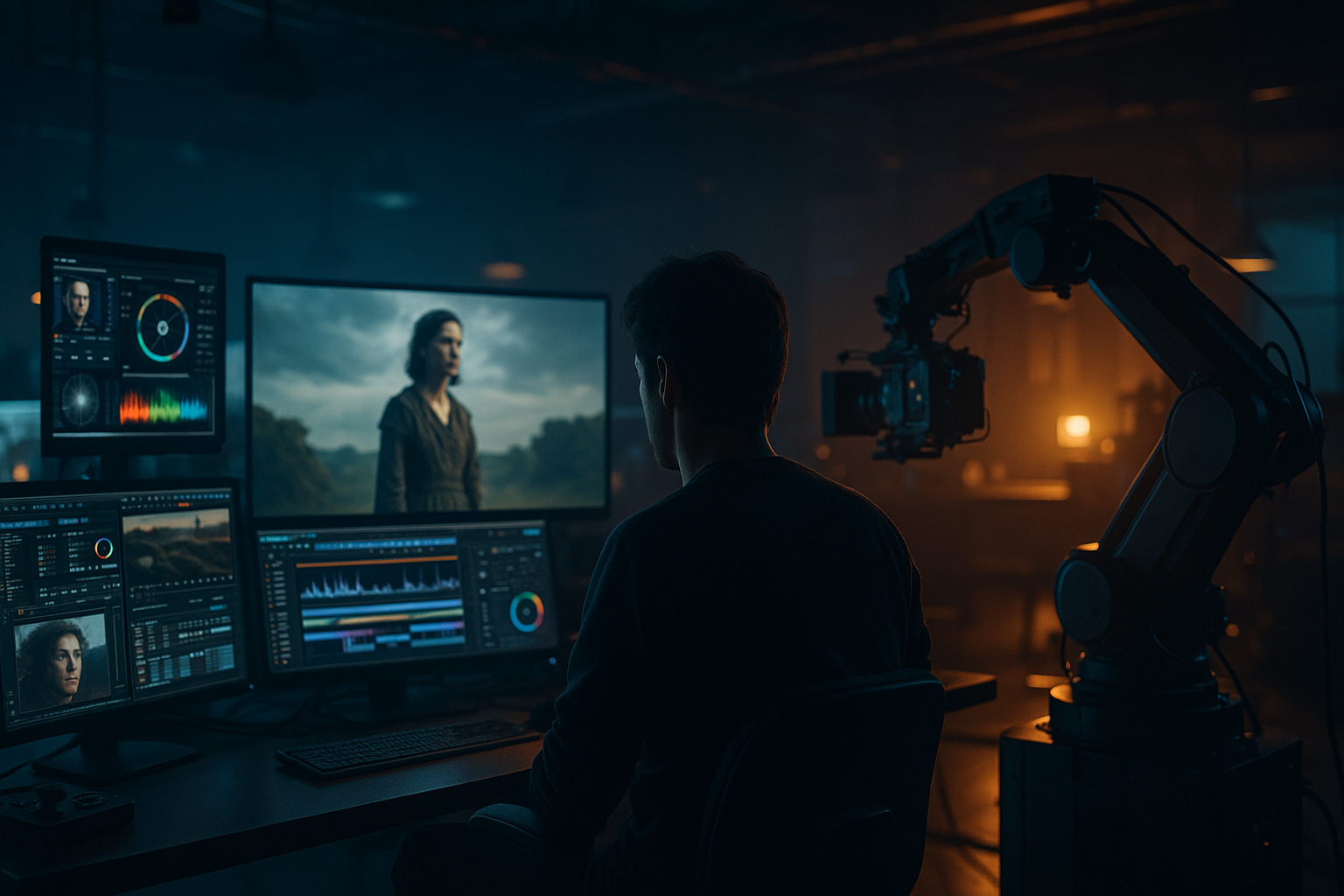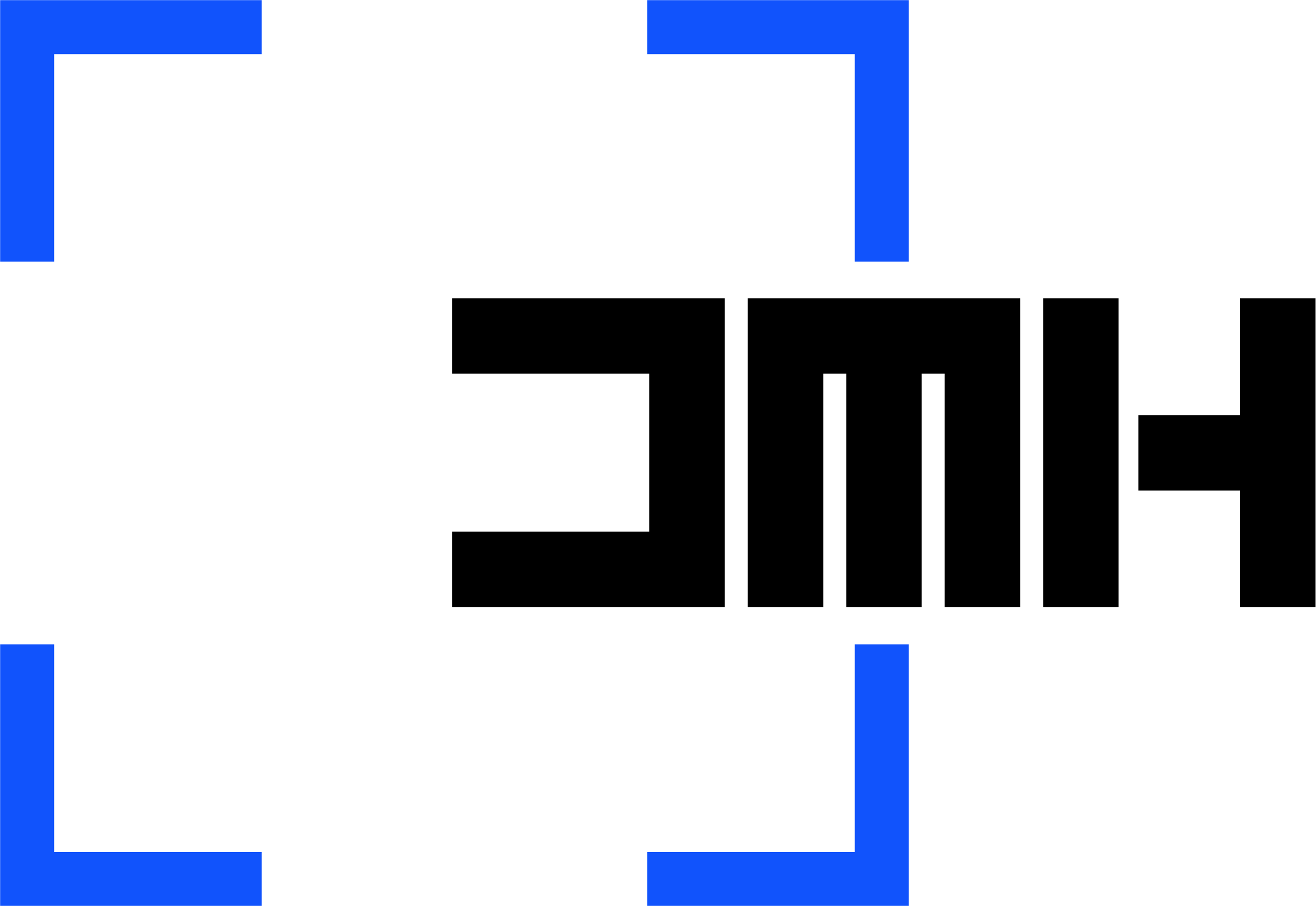Creators’ Studios and the Rise of AI Driven Filmmaking

The story of cinema has always been a story of tools and imagination. From the first cameras that captured fleeting shadows on celluloid, to the sprawling sets of golden age Hollywood, to the digital revolution that replaced reels with pixels, each generation of filmmakers has been defined by its instruments. Today, another shift is underway, one that feels both inevitable and uncertain. Artificial intelligence has stepped onto the stage, not as a silent background presence but as an active collaborator. The most interesting response to this new reality is the rise of creator studios, places where directors and producers are embedding AI directly into the creative process, hoping to open new possibilities without losing the spirit that defines storytelling.
High profile filmmakers like the Russo Brothers have begun experimenting with this model through ventures like Agbo, which seeks to merge the infrastructure of a studio with the adaptive intelligence of machine learning. This is not an abstract experiment. It is a structural rethinking of how stories can be written, visualized, financed, and delivered. To understand why this moment matters, it helps to look at the longer history of how filmmakers have grappled with their tools, and how the idea of a studio has always been tied to questions of power, control, and imagination.
The Historical Role of the Studio
The traditional studio was never just a physical space. It was an ecosystem of writers, directors, editors, technicians, financiers, and marketers working under one roof. The goal was efficiency and scale. A studio could control the production line of entertainment in the same way a factory controlled the flow of goods. From casting to distribution, decisions were centralized.
Over time, however, independent creators began breaking away from this structure. Technology made it possible for smaller teams to achieve what once required vast machinery. Cameras became lighter, editing software became more accessible, and streaming platforms offered new distribution channels. The twentieth century ended with a strange paradox: the major studios grew larger through consolidation, yet the means of production became democratized.
It is into this paradox that AI now enters. On one hand, AI offers large corporations immense efficiencies, allowing them to cut costs and automate workflows. On the other hand, AI provides independent creators with tools once reserved for the most well funded studios. In this tension lies the promise of the creator studio, a hybrid model that seeks to reclaim independence while embracing scale.
The Vision of AI Driven Creator Studios
A creator studio today is imagined not as a massive corporate office filled with departments, but as a lean environment where AI augments every stage of production. The idea is to embed intelligence into the very fabric of the studio, so that artists can move seamlessly from concept to execution.
At the writing stage, AI can generate alternative drafts, test different tonalities, and even simulate audience reactions. Rather than replacing writers, it acts as a partner that accelerates the iterative process. In previsualization, AI driven tools can generate storyboards, animatics, and even rough cuts of scenes based on simple textual descriptions. Filmmakers can see their ideas unfold before committing resources to physical production.
On set, AI can assist with lighting adjustments, camera tracking, and real time visual effects, enabling directors to experiment with possibilities that would otherwise be too costly or time consuming. In post production, algorithms can handle tedious editing tasks, synchronize sound, and even color grade footage in line with an established aesthetic. The entire pipeline becomes more fluid, reducing friction between stages.
The deeper vision is not just efficiency, but creative empowerment. By embedding AI, a studio like Agbo can offer directors a kind of augmented imagination. The machinery of production becomes lighter, less of a constraint, and more of a collaborator. For artists who fear losing control to corporate mandates, this model offers a different path. The studio exists to serve the creator, not the other way around.
Artistic Control and the Fear of Replacement
One of the central anxieties surrounding AI is the fear that it will replace human creativity. Script generators, synthetic voices, and automated editing have already sparked debates about the role of human labor. Yet the creator studio model reframes the conversation. The goal is not to eliminate the artist but to empower them with tools that extend their reach.
The Russo Brothers have spoken of AI as an opportunity to democratize storytelling. In their view, technology should allow more voices to be heard, not fewer. A director in Lagos, Mumbai, or São Paulo could access the same level of production quality as a director in Los Angeles. The creative field becomes less about geographic privilege and more about imaginative capacity.
This philosophy requires careful balance. If AI is used as a blunt cost cutting tool, the risk is homogenization, where all films begin to look and feel the same. But if AI is embedded as a creative partner, it can enhance diversity of expression. The creator studio becomes a laboratory where technology serves imagination, rather than constraining it.
AI as Infrastructure for Storytelling
The role of AI in filmmaking goes beyond isolated applications. Increasingly, AI is being treated as infrastructure. Just as electricity once transformed the studio system by enabling night shoots, new lighting techniques, and complex editing machinery, AI now provides a substrate upon which all other activities can operate.
Consider the challenge of world building. To construct a fantasy universe traditionally required armies of designers, modelers, and visual effects artists. With AI assisted generation, a small team can prototype entire worlds, testing aesthetics, cultures, and narrative possibilities in weeks rather than years. This does not mean that large teams will disappear, but the threshold of entry is lowered.
Financing and distribution are also being reshaped. AI models can analyze audience data, predict demand for certain genres, and suggest optimal release strategies. Marketing campaigns can be tailored with unprecedented precision, reaching micro audiences across platforms. In this sense, AI becomes a connective tissue linking creation, production, and reception.
Case Study: The Agbo Experiment
Agbo, founded by the Russo Brothers, offers a glimpse into how these ideas are materializing. Known for directing some of the highest grossing films of all time, the Russos have the financial freedom and industry influence to experiment. Their vision is to create a studio where AI tools are integrated from the ground up, supporting writers, directors, and artists in real time.
Early reports suggest that Agbo is developing in house AI systems for script analysis, visual pre production, and post production workflows. The emphasis is on artist empowerment. Rather than outsourcing every task to external vendors, the studio seeks to keep creative control close to the source. The hope is that by embedding AI directly within the studio, artists can experiment freely without bureaucratic delays.
What makes Agbo particularly significant is its cultural visibility. When independent creators experiment with AI, the results may not draw global attention. But when filmmakers with blockbuster credentials invest in this model, the industry takes notice. Agbo may serve as a proving ground for what the next decade of filmmaking will look like.
Ethical Questions and Creative Responsibility
The rise of AI in creator studios also raises profound ethical questions. If AI can generate images of actors who never consented, or replicate voices without permission, where should the boundaries be drawn. How can artists ensure that their work respects the rights and dignity of others.
Creator studios must address these concerns head on. Clear policies around consent, attribution, and compensation will be essential. Without such frameworks, AI risks becoming another instrument of exploitation. Yet with thoughtful design, AI can enhance fairness. Imagine a system where actors are compensated every time their likeness is used, or where royalties are automatically distributed through smart contracts.
The ethical dimension is not a peripheral issue. It is central to the legitimacy of the creator studio model. Audiences will not embrace AI driven films if they perceive them as deceptive or exploitative. Transparency, accountability, and fairness must be built into the very fabric of the process.
Global Implications and Cultural Diversity
One of the most exciting implications of creator studios is their potential to expand cultural diversity in cinema. For too long, global storytelling has been dominated by Hollywood, whose resources and distribution networks overshadowed local industries. With AI, the barriers to high quality production are lowered.
A filmmaker in Africa can now use AI to previsualize scenes, generate concept art, and edit footage with professional polish. Local stories can achieve cinematic quality without requiring Hollywood scale budgets. Streaming platforms provide distribution channels that bypass traditional gatekeepers.
This could lead to a renaissance of regional storytelling, where diverse cultural perspectives enrich the global media landscape. Creator studios may not only empower individual artists, they may also rebalance the geography of cinema.
The Future of Collaboration
Looking ahead, the most transformative aspect of AI driven creator studios may be the way they reshape collaboration. In traditional filmmaking, collaboration is bounded by geography and logistics. Writers, directors, and actors must be physically present to contribute. With AI assisted platforms, collaboration can become more fluid and distributed.
Imagine a script developed simultaneously by writers across continents, visualized in real time through AI storyboards, and refined through feedback from global communities. Production becomes a living conversation rather than a linear pipeline. This could foster new forms of collective creativity, where the boundaries between roles blur and new genres emerge.
The idea of the auteur, the singular visionary who directs every detail, may evolve into a more collective model of creativity. AI becomes the glue that binds distributed teams, allowing them to operate as if they were in the same room. The result is not the erasure of individuality, but the expansion of what collaboration can mean.
Challenges and Limitations
Despite the excitement, it is important to recognize the challenges. AI systems remain imperfect. They can replicate biases, generate errors, and fail to capture the nuances of human expression. Relying too heavily on AI risks flattening the emotional depth of storytelling.
There are also economic concerns. While AI lowers some barriers, it introduces new dependencies on proprietary systems. If creator studios become reliant on a handful of AI providers, creative independence may once again be compromised. Open source alternatives and transparent standards will be vital to avoid monopolization.
Finally, audience perception remains unpredictable. While some viewers may embrace AI driven films with enthusiasm, others may resist, fearing a loss of authenticity. The industry will need to navigate these perceptions carefully, finding ways to integrate AI without alienating audiences.
Toward a Philosophy of Augmented Imagination
At the heart of this conversation lies a philosophical question: what is creativity in the age of AI. If a machine can generate images, sounds, and scripts, what remains uniquely human. The answer may lie not in competition but in augmentation.
Creativity has never been a solitary act. It has always involved tools, collaborators, and cultural influences. Painters used brushes, composers used instruments, filmmakers used cameras. AI is the next instrument, one that extends the range of what is possible. The essence of creativity remains the ability to imagine, to feel, to interpret the world in ways that resonate with others.
The creator studio is an attempt to formalize this philosophy. By embedding AI within the fabric of filmmaking, it acknowledges that imagination and technology are inseparable. The challenge is to ensure that the human voice remains at the center, guiding the machine rather than being guided by it.
Conclusion
The rise of AI driven creator studios marks a new chapter in the history of cinema. It is a chapter defined by possibility and caution, excitement and uncertainty. The example of the Russo Brothers and Agbo demonstrates that this is not merely theoretical, but a tangible shift already underway.
Whether this model will flourish depends on how well it balances efficiency with artistry, innovation with ethics, and technology with humanity. If done well, creator studios could democratize filmmaking, expand cultural diversity, and open new forms of collaboration. If done poorly, they could homogenize expression and erode trust.
In the end, the story of AI and cinema is not about replacement, but about extension. It is about imagining a future where the tools of creation are more accessible, where the boundaries of storytelling are expanded, and where the voices of many can find their way to the screen. The creator studio is not a factory, but a workshop of imagination. It is a reminder that the essence of cinema lies not in the machinery, but in the stories we tell, and the ways those stories connect us to one another.

